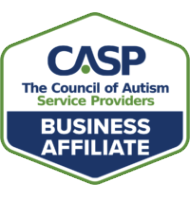Series: Working With Insurance—Navigating Contracts, Credentialing, And Compliance
With continued growth in the ABA industry, the impact of insurance funding is changing the structure of ABA businesses. While the increase in insurance funding for families is positive, the burden has fallen on providers to navigate the complex nature of insurance reimbursements. In order for clinical teams to stay focused on treatment and quality, ABA businesses need a strong support system behind the scenes. This series will cover important aspects of working with insurance companies and will help providers build a solid foundation for sustainable business practices.
- Written and presented by: Consultant Emily Roche
About Our Presenters

Emily Roche
Guest Presenter
Emily is the current Director of Contracting and Revenue Cycle Management at Bierman ABA Autism Centers. Previously the Director of Services for ABA Therapy Billing, Emily has been working in ABA contracting and operations since 2012. With a background in contract, credentialing, authorizations, and appeals, she has often provided training throughout the ABA industry on these topics. Emily has presented at conferences such as the Autism Law Summit and the Association of Professional Behavior Analysts. After pursuing a bachelor’s in business administration from Gonzaga University, Emily completed a master’s in health administration at the University of Colorado.
Part 1: Contracting: Be In-The-Know Before You Go In-Network
Decide if Accepting Insurance is Possible for Your Business
Part 1: Contracting: Be In-The-Know Before You Go In-Network
Stepping into the world of insurance reimbursement brings a lot of considerations to the table. Whether you are starting a new business or just adding insurance for the first time, be sure you first learn about the insurance environment in your state.
Research the mandate in your state, if you have one, and find out if any amendments have been made to the law. Are there any caps or limits on ABA therapy being enforced? Does the law stipulate that providers need to have certain qualifications, including behavior technicians? Reach out to other ABA providers for collaboration and help. Many agencies are willing to share their own knowledge in order to keep pushing the whole industry to improve and grow!
While many states now have comprehensive insurance mandates, some states still have barriers that can make trouble for a sustainable business. For example, New York is difficult for BCBAs to obtain licensure, Tennessee still does not have a full state mandate, and Washington requires technicians to be licensed through the state. Our blog “Consider This Before Expanding Your ABA Services Into a New State” may be helpful.
You should also research the major insurance players in your state or even your specific city/county. If one insurer dominates the market, you will want to review that specific company’s requirements. In some cities, Tricare (insurance coverage for military service members both active and retired) is a dominant health insurer. However, Tricare is also known to have rigorous rules for ABA providers—extensive documentation, specific assessment requirements, RBT certification, and credentialing of RBTs required. If the requirements set by a predominant insurer in your area are not sustainable for your business, it may be good to look at a different location or wait until you can meet the requirements, before moving accepting that insurance.
Administrative Burden of Accepting Insurance
Depending on the projected number of insurance funded clients, the administrative tasks related to insurance add up quickly. As you consider the impact of accepting insurance reimbursements for your agency, you will also need to estimate the resources required to process the added paperwork and administrative tasks. (See handout on Insurance Workflow—coming soon).
Each client using insurance will require you to spend time on:
- Verification of eligibility and benefits: Does the insurance policy cover ABA? What are the patient responsibility costs? Where do claims get sent, and how are authorizations obtained?
- Obtaining authorizations: Providers must obtain authorizations for an initial assessment and for ongoing services (usually every 6 months). Sometimes an authorization will require on the phone clinical reviews, and you may need to spend time on appeal if any requests are denied.
- Sending claims to insurance companies: How will you track the timesheets/scheduling for your company so your billing is accurate? Will you purchase practice management software that has electronic schedules, which will also help with coding and sending electronic claims? If you do not purchase software, how will you maintain all your records in case of an audit? Another option is outsourcing your billing to a third-party company that is experienced in ABA billing and collections. (Related Webinar: How to Build a Successful “In-House” Billing Team)
- Billing, including patient invoices: Who will handle this billing? How will you learn about billing rules and coding your claims correctly? How will you review billing for accuracy? How will you track co-pays or co-insurance owed by families and prepare invoices for each family?
- Cash posting and accounting: Sending out claims to insurance is only the first step. As payments start to come back, you will need to post the payments against the amounts you billed out. How will you handle cash posting and tracking of outstanding payments (from both insurance and families)?
- Collections and outstanding payments: If the insurance company does not pay the full amount you billed (or denies the payment altogether), how will you follow up on these missing payments? Billing software helps track all these amounts, but you will still need the human resources to tackle these tasks. Depending on your size, it may be a good idea to hire a billing person or team, including someone handling intake and authorizations.
Insurance Reimbursements and Profit Margins
Providers should ALWAYS try to negotiate the rates offered by an insurance company until an acceptable fee schedule is agreed upon. However, those rates will almost always be below the your “usual and customary” fee schedule. Therefore, before getting in-network with insurance companies, providers must get a solid handle on their budget.
Create a budget that estimates all your expenses. Then, project the revenue you would earn based off your standard fee schedule. Before approaching negotiations with an insurance company, know what rate structure, if below your customary rates, would still be sustainable for your business. If the insurance company will not negotiate rates that are sustainable for your business, then do not join the network. Turn down the contract, stay out of network, or explore single case agreements. If providers stay out of network, the insurance company will eventually be forced to evaluate their contract terms in order to maintain enough providers in their network. Across the industry, providers need to walk away from insurance terms if the insurance company is not offering reasonable contracts.
When estimating your expenses, try to include all the additional resources it will take for your company to handle the administrative tasks involved with insurance, such as additional office staff and billing software.
In addition to your actual budget, you should also review the cash you need on hand each month to meet payroll expenses. Decide how much of a “cushion” you will need in the bank in order to ride out any bumps in your cash flow while working with insurance. What if an insurance company denies payment for a month? Two months? Or more? How will you manage at the start of the calendar year when most of the payments will actually come from families due to deductibles and co-pays? You should estimate that it will take 45-60 days to receive reimbursement from insurance companies, so you will need a strategy for navigating any cash flow issues that arise.
Be Diligent About Compliance
When deciding to join an insurance network, you also need to verify the compliance requirements for each insurance. There will be requirements set for your employee/provider qualifications, clinical documentation expectations, and client files. Not only do you need to confirm that meeting these requirements is sustainable for your business, you also need to track these requirements to stay in compliance for the future. Many providers also consult legal counsel to set up specific intake documentation to cover topics like patient rights and responsibilities or financial responsibility of families.
Examples of compliance documentation:
- Do employee files contain basic HR information such as a resumes, verified references, and job descriptions?
- Does the insurance company require things such as CPR or First Aid training? Are you keeping these items up to date and copies of certifications in employee files?
- Do behavior technicians need to show documentation of specific trainings before seeing a client or complete any certifications such as RBT or HIPAA?
- Do all client files include intake packets, consents for assessment and treatment, release of information forms, notice of privacy practices, and information regarding medications and allergies?
- Do you maintain session notes for every treatment session and do notes have staff signatures?
To learn about each insurance company’s requirements, you can often search online for guidelines posted by the insurer or ask your provider representative. You should also be familiar with your provider handbook and any requirements listed in your contract. Once you are familiar with the requirements, you should set up standard formats for both client and employee files. Once in-network, set up a system to periodically audit your files to ensure all documentation stays up to date.
Timelines for Insurance Contracts
Once you decide that insurance reimbursement is a good strategy for your company, you will also need to be realistic about the timeline for becoming an in-network provider. The process of working with insurance is never quick, and it is not a good idea to rush through contract reviews or rate negotiations.
A good rule of thumb for your timeline will be six months. Some insurances do move faster, but others can take even longer, especially when rate negotiations take a lot of time. Remember you will also need to account for the credentialing process. To be fully in-network, each of your individual providers will have to be “credentialed” by the insurance company.
When initiating and reviewing the contract with an insurance company, there are some key points to clarify with each company. (Related Blog: “10 Things You Must Pay Attention to in Your Insurance Contracts“)
- Who is your specific provider representative?
- When will you be sent the fee schedule for review?
- Is the contract a group contract or individual contracts tied to each of your providers?
- When can you start the credentialing paperwork for your providers? And which providers need to be credentialed?
- Can you provide services to clients while you wait on the contract by asking for Single Case Agreements?
- Does the contract cover all policies under that insurance company, including HMO products?
The contracts will often specifically be “behavioral health” contracts. You will be in-network for ABA therapy only, and a contract for other medical services such as Speech Therapy or Occupational Therapy would require a second contract. If your practice is in multiple states, you will usually need a contract in each state. Many providers think a contract applies across state lines for national insurance companies such as United Health Care of Aetna, but this is often not the case.
Once you decide to sign the insurance contract, you will need to wait for your effective date before you are in-network. The provider rep will be able to tell you the pending effective date of your contract.
Taking the Plunge
Accepting insurance reimbursements obviously makes a big financial difference for families as they navigate ABA services. However, becoming an in-network provider with insurance also has a major impact on the workflow of your business. When approaching the realm of insurance contracts, take the time to understand what you’re getting into! Do your homework and learn about your regulatory environment. Be patient and set realistic timelines. Understand your budget and only move forward with contracts that are sustainable for your business. Connect and collaborate with other provider or consultants, participate in workshops or conferences, and ask lots of questions!





